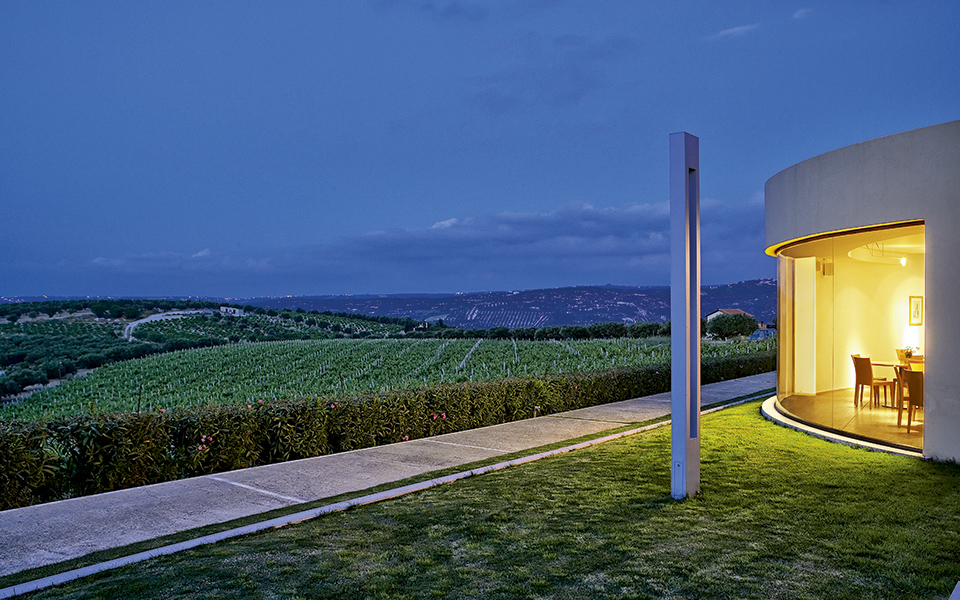A decade or two ago, the notion of good quality Cretan wine would have sounded like a joke. Of course, Greece’s largest island is one of the oldest wine-producing regions in the world – the discovery of a 4th millennium BC grape press during an archaeological dig south of Iraklio confirmed that. However, during the modern era, the quality of the island’s wines seemed firmly rooted in mediocrity until recently, when a new generation of producers started turning things around.
Crete is gradually starting to put itself on the modern wine map thanks to the efforts of a number of young vintners who left the island to study their craft and later returned to take over family businesses, producing wines that are contemporary, focused and packed with flavor.
In the demanding world of wine, however, this improvement is not enough to mend a reputation so badly marred by the sacrifice, over decades, of quality for quantity in bulk production. For this, winemakers need to start building brands that are considered “unique” or “interesting,” two qualities that Crete can offer in abundance, thanks largely to the diversity of its terrain and a wealth of excellent native grape varieties.
The grapes are of paramount importance. Cretan wine producers need to look back to their island’s storied past, to traditions that stem all the way back to that Bronze Age Minoan civilization and to put serious effort into repopulating Crete’s vineyards with age-old varieties. The good news is that they have been doing just that, throwing themselves into the challenge with passion.
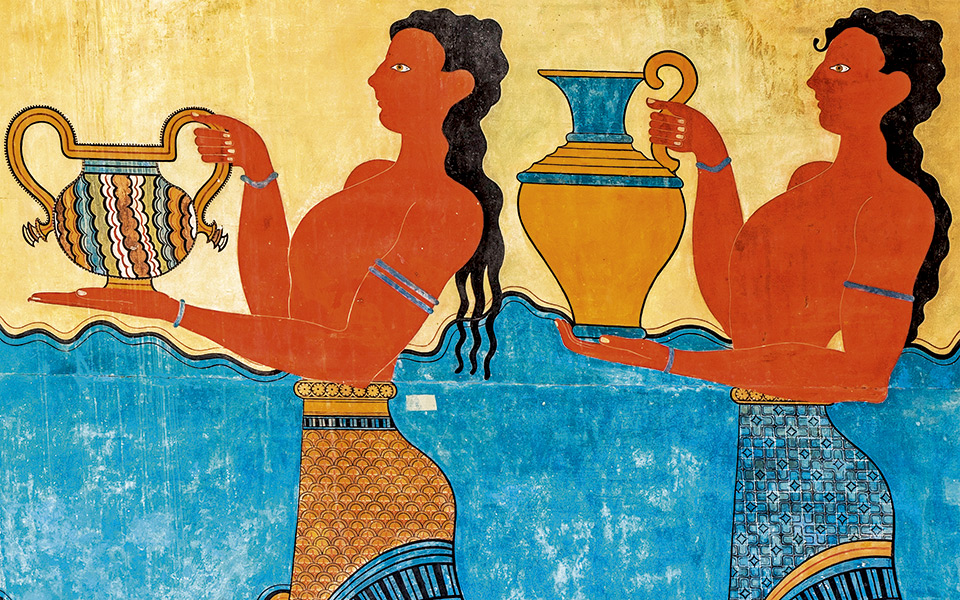
The Boutari family, which opened its state-of-the-art Cretan winery in 2004 after planting its first vines on the island in 1990, is responsible for salvaging long-lost varieties like Moschato Spinas. This grape, a rare clone of the Muscat variety, trades the easy rose-tones of Muscat for more body and produces both an accommodating table wine as well as complex wines, including Skalani.
The diva among Crete’s grapes is without doubt the white Vidiano, for decades found only in small quantities, hidden between other varieties in the vineyards of Rethymno. Full of apricot and peach aromas, round and rich in the mouth, it is a Cretan gem that is fascinating in all its manifestations. Today, Vidiano is making magic in Iraklio and Hania, giving us wines that remind us of the famed Viognier variety.
“Vidiano can handle poor soil and plenty of sun, but it needs a strong hand to contain production,” says Nikos Douloufakis, a winemaker in Iraklio who has associated his name with this variety by producing excellent tank- and barrel-aged versions.
Difficult grapes, such as Vidiano, were understandably less welcome in the industry. For decades, most of Crete’s winemakers chose volume over quality, forming large cooperatives to cater to the bulk market and ignoring more demanding varieties in favor of ones with higher yields. However, this was not the case at Lyrarakis Winery, in Alagni, Iraklio.
“Full of apricot and peach aromas, round and rich in the mouth, Vidiano is a Cretan gem that is fascinating in all its manifestations.”
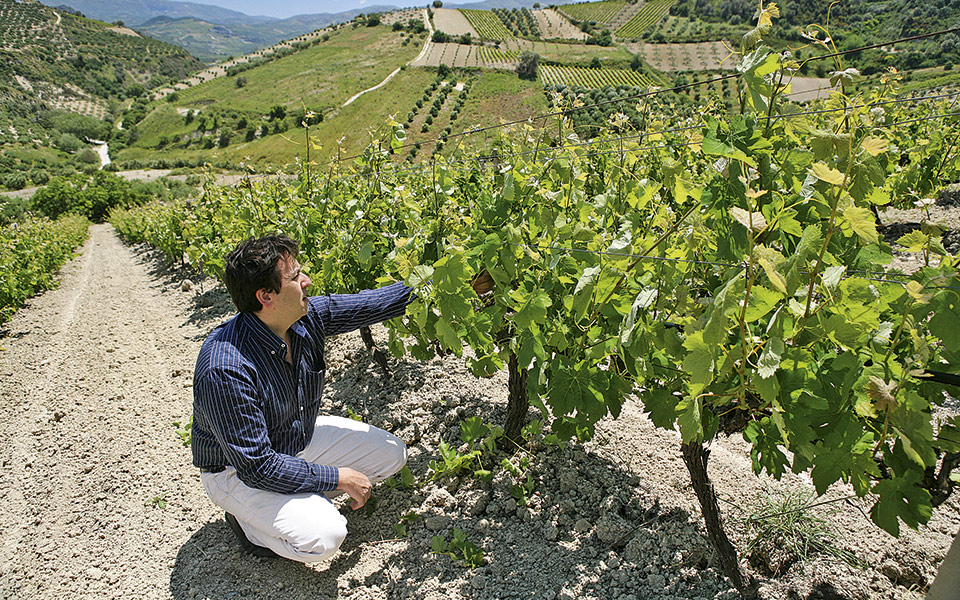
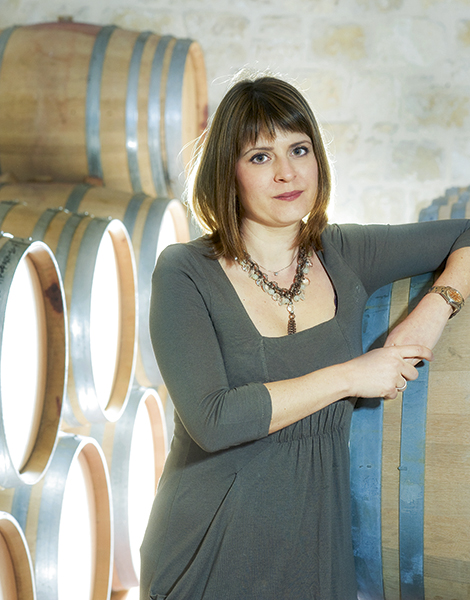

“The Plyto variety has very firm grapes and takes a lot of hard work to grow on the vine, while Dafni takes a long time to ripen and is therefore vulnerable to autumn rains,” says Manolis Lyrarakis, describing the two white varieties that his family salvaged and elevated to some prominence. “My father cultivated them secretly for years.” Today, the young winemaker uses Plyto grapes to produce light, nervy wines, and Dafni to make well-balanced vintages with pronounced bay-leaf aromas.
Over on the lower slopes of the snow-capped White Mountains, or Lefka Ori, the untamed terrain and chilly temperatures are not the only obstacles for Kostis Galanis of the Manousakis Winery, the winery responsible for starting the Cretan wine revolution of foreign varieties, mainly from Southern France. “The hares seem to enjoy our grapes just as much as oenophiles,” laments Galanis, commenting on man’s constant battle to tame nature.
The vagaries of nature is certainly one of the defining characteristics of Lasithi, where the farmers of Sitia struggle to cultivate the wild terrain of the eastern coast, while along the coast to the west five-star resorts with white-sand beaches and crystalline bathing waters spring up at Elounda Bay. The people of Sitia have a reputation for being outside-the-box thinkers. Giannis Economou is no exception, surprising the wine world not only with both dry and sweet reds made from the ancient Liatiko grape, but also with his unusual production schedules for those wines.
“I want consumers to enjoy my wines at their most harmonious. That’s why I launched the 2006 first, then the 2000 and now the 2009.” With an oenology degree from Alba and with cellar experience in Germany and at Bordeaux’s Chateau Margaux, Economou relies on ungrafted vines and extremely low yields to create wines that resemble Burgundies, gaining fans around the world with every new release.
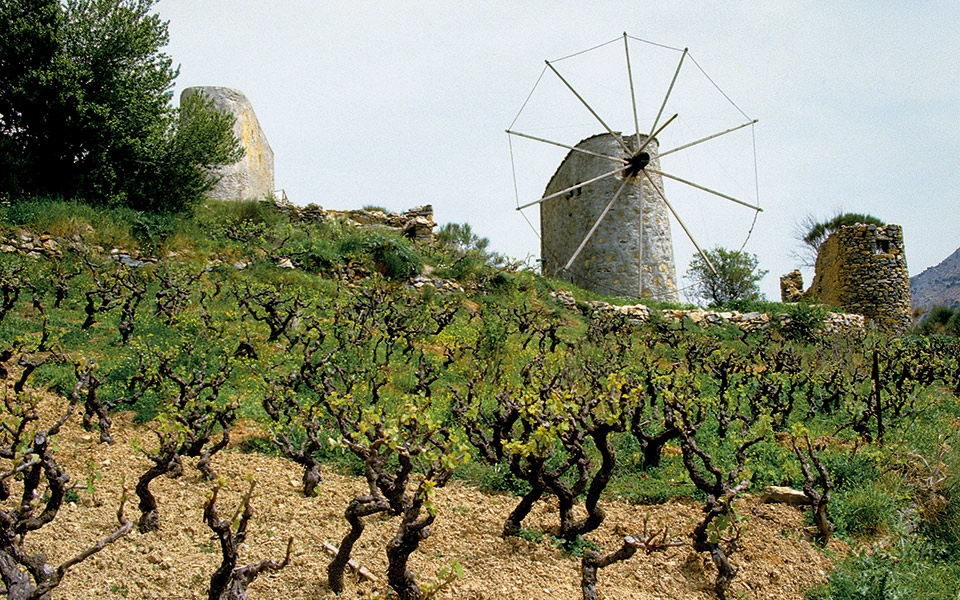
© VisualHellas.gr
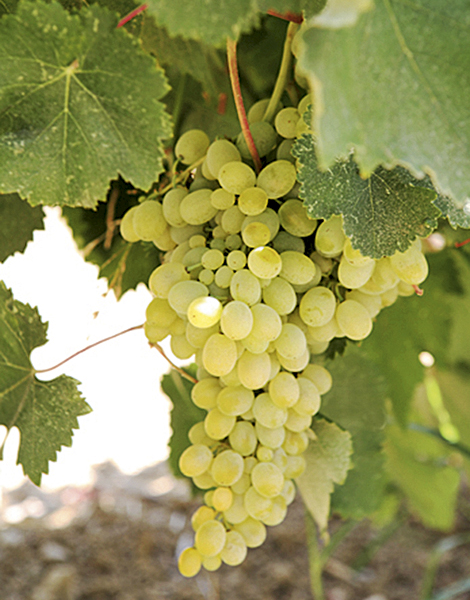
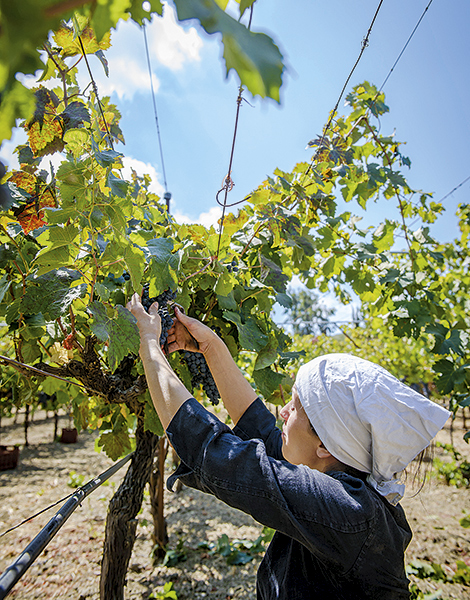
Crete’s special gifts, however, do not end with just these grapes. There’s also Thrapsathiri, for example; it may be named after a Greek term for productivity, but under the right conditions it can do more than offer high yields; it produces exciting wines, exotic and full-bodied. Then there’s Kotsifali, a peppery and fruity grape variety that gives juicy rosés but is also capable of softening even the harshest wines. This is why it is often blended with tough varieties like Mandilari, another local grape and probably the orneriest of the lot though its vitality is rewarding.
It’s not all about the natives, though. When it comes to foreign varieties, those that appear to be adapting best to the hot climate of Crete are famous reds like Cabernet Sauvignon and Grenache, but the unrivaled star of the immigrants is Syrah, which feels right at home here and is yielding excellent, full-bodied wines, either alone or in blends with indigenous reds.
Crete’s significant wine accomplishments are really putting it on the map: with an increasing number of wineries opening their doors to the public, the island is developing some interesting wine routes. Add to this the distinction of four distinct quality-wine appellations (PDOs) and the expanding vision of its winemakers, and it is hardly surprising that Crete is one of the most exciting wine-producing regions in Greece today.
“Under the right conditions Thrapsathiri can do more than offer high yields; it produces exciting wines, exotic and full-bodied.”

